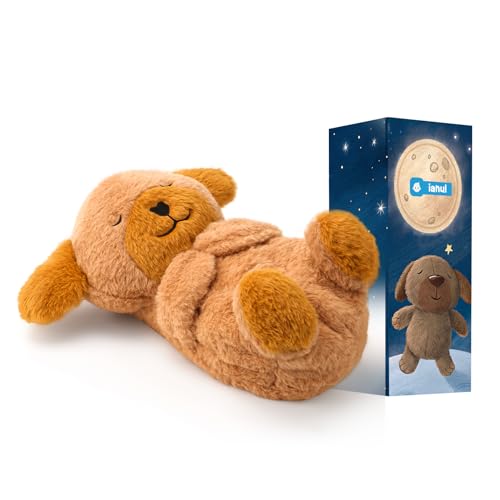5 Sleep Tools That Help Kids With Sensory Issues Sleep Through the Night (Without Melatonin)
Affiliate disclosure: Some links on this site are affiliate links. If you make a purchase through them, I may earn a small commission at no extra cost to you. I only recommend products I use or trust—thank you for supporting this blog!
You love your child more than anything, but bedtime can feel like a battle you never signed up for.
You do the routine, turn off the lights, and pray for rest, only to hear little footsteps down the hall at 2 a.m. again.
If your child has sensory sensitivities, you already know that sleep struggles can be next-level. You’ve probably tried melatonin, only to worry about long-term use or the constant need to adjust dosage. I’ll be honest, I fell victim to the melatonin bandwagon with my daughter a few years ago. But I noticed that she began to get dependent on eating 1 gummy every night. So, I quickly weaned her off. The good news is there are gentle, sensory-friendly tools that I found that can help your child fall asleep faster and stay asleep longer, without relying on supplements.
These tools work because they target the real root of sleep issues: sensory regulation, comfort, and consistency.
Here are five mom-approved products that can help your child finally sleep through the night.
1. Compression Blanket
A compression blanket provides calming, deep pressure input that helps the body relax and prepare for rest. Unlike heavy weighted blankets, compression blankets use stretchy fabric that gently hugs your child without overheating them.
This type of deep pressure stimulation helps lower cortisol (the stress hormone) and increases serotonin, which naturally converts into melatonin as the body winds down.
How to use it:
Let your child try the blanket during calm playtime before bed so they can get used to the feel.
Start with short periods, like 10 minutes before bedtime, and gradually increase to full-night use.
Pair it with a dimly lit environment or soft background sound to help their nervous system settle.
Why it works:
Kids with these differences often crave proprioceptive input (pressure or movement that grounds their bodies). The compression effect provides the same comfort as a gentle hug, helping their bodies recognize it’s time to rest.
2. Weighted Blanket for Kids
Weighted blankets are one of the most effective non-melatonin tools for improving sleep quality. They work by applying gentle, even pressure that can reduce anxiety and help your child feel secure throughout the night.
Unlike compression blankets, weighted blankets use glass or ceramic beads to add subtle weight across the body, promoting the release of serotonin and dopamine. This deep touch pressure helps regulate the nervous system and supports longer stretches of uninterrupted sleep.
How to use it:
Choose a blanket that’s around 7–10% of your child’s body weight.
Place it over their legs or lower body at first, rather than the full body, to avoid overstimulation.
Make sure your child can move freely and remove it on their own.
Why it works:
Weighted blankets help quiet the sensory system and calm restlessness. If your child tosses and turns, this steady, even pressure can help them stay settled through the night. This is my daughter’s favorite! She doesn’t sleep without it.
3. Chewy Toy
Some kids with sensory differences need oral sensory input to self-regulate. Chewing is one of the body’s natural ways to release tension and calm the nervous system, especially during transitions like bedtime.
A high-quality chewy toy provides a safe, soothing outlet for this need. Instead of teeth grinding, thumb sucking, or fidgeting, your child can use the toy to unwind and release energy before lights out.
How to use it:
Introduce it during your bedtime wind-down routine, not after the lights go out.
Encourage your child to chew for 10–15 minutes before brushing teeth and starting story time.
Use it alongside other sensory tools like weighted or compression blankets for a full calming effect.
Why it works:
Chewing provides heavy sensory feedback through the jaw and helps signal the body that it’s safe to relax. Many kids sleep better when their sensory needs are met before their head hits the pillow.
4. White Noise Machine
Noise sensitivity is one of the biggest hidden sleep disruptors for autistic kids. A creaky floor, a passing car, or the hum of the refrigerator can trigger awakenings throughout the night.
A white noise or pink noise machine helps block out unpredictable sounds and provides a consistent background hum that calms the brain. Brands like Hatch or Yogasleep are popular with parents for their reliability and soft sound profiles.
How to use it:
Place the machine at least 3–6 feet from your child’s bed.
Choose a continuous sound (like rain or white noise) instead of nature tracks that start and stop.
Keep the volume low to medium — just enough to mask sudden noises without overwhelming their senses.
Why it works:
Predictable, gentle sound helps stabilize the brain’s sensory input, preventing the hyper-alert reactions that cause night wakings. It’s especially helpful during seasonal changes like daylight savings, when routines are already off balance.
5. Vibrating Plush Toy
The right plush toy can become your child’s favorite bedtime companion. A vibrating or weighted plush provides both tactile comfort and gentle sensory feedback.
These toys are designed for kids who need more than softness. They give rhythmic vibrations that mimic breathing or extra weight that helps relax the body and quiet the mind. Many parents say it feels like their child is being hugged or rocked to sleep, without actual movement.
How to use it:
Introduce the plush during your bedtime story or routine so your child builds a positive association with it.
Use it along with a compression or weighted blanket for full-body calming input.
Why it works:
The combination of weight and vibration helps regulate sensory input while providing emotional comfort. Kids who struggle to self-soothe often fall asleep faster when they have a consistent sensory cue to anchor them.
How to Layer These Tools for Maximum Sleep Success
Each of these products can help individually, but when used together, they create a complete sensory-friendly sleep system. Here’s how to combine them effectively without overwhelming your child.
Start with one tool at a time.
Introduce each new item slowly and observe your child’s reactions. Some kids need several nights to adjust.Build a bedtime sensory routine.
Try this simple sequence: Chewy toy → Compression blanket → White noise machine → Vibrating plush toy.Keep the environment predictable.
Avoid switching sounds, scents, or blankets too often. Consistency is key to signaling safety and rest.Adjust lighting and temperature.
Use dim amber lighting and keep the room slightly cool. Most kids sleep best around 68°F.Stay calm and patient.
Sensory regulation takes time. It’s okay to test and tweak your setup until you find the right mix.
What Makes These Tools So Effective for Autistic Kids
The secret to better sleep isn’t in a pill. It’s in how you meet your child’s sensory needs before and during sleep. Here’s what’s happening behind the scenes when these tools work:
Deep pressure input from compression or weighted blankets activates the parasympathetic nervous system, which tells the body it’s safe to relax.
Oral sensory input from chewy toys calms overstimulation and reduces nighttime anxiety.
Consistent auditory input from white noise helps block unpredictable sounds that can trigger stress responses.
Vibration and tactile stimulation from plush toys promote body awareness and lower arousal levels.
When used together, these tools help the body naturally release calming chemicals like serotonin and oxytocin, creating a smoother path to restorative sleep.
Protect Their Sleep During Daylight Savings Changes
Daylight savings can throw even the best sleep routine off track. When the clocks fall back, kids often wake up an hour earlier or have trouble adjusting to earlier bedtimes.
To help your child adapt:
Shift bedtime and wake time by 10–15 minutes each night for three days before the time change.
Keep all sensory cues the same — same white noise, same plush toy, same blanket.
Use your compression or weighted blanket during transitions to help ground your child’s nervous system.
By maintaining consistency in the environment, your child’s body will naturally adjust to the new schedule with less stress.
What to Expect When You Start Using These Tools
The first few nights might not be perfect. That’s normal. Your child’s brain and body need time to recognize these tools as cues for rest.
Here’s what many parents notice after a few weeks:
Falling asleep happens faster, sometimes within 20 minutes instead of an hour.
Night wakings become less frequent or shorter.
Mornings are calmer because your child wakes up more refreshed.
Parents feel more rested and can focus on other parts of life again, including building the dream life you’ve been pushing to create after bedtime.
Consistency is the key. Stick with your system for at least two weeks before making any major changes.
Why Melatonin Isn’t Always the Answer
Melatonin can be helpful in certain cases, but it’s not meant for long-term nightly use. Over time, the body can depend on it rather than producing melatonin naturally.
Tools like compression blankets, white noise machines, and weighted toys work differently. They don’t override your child’s biology — they support it. These methods teach the body and brain to regulate sleep naturally, which creates lasting change instead of quick fixes.
If your goal is to reduce dependence on supplements, focusing on sensory tools is the most sustainable way forward.
Build the Cozy Routine That Works for Your Family
Helping your child sleep through the night isn’t just about bedtime. It’s about creating peace for the whole household.
You deserve evenings that end with calm instead of chaos. You deserve to wake up feeling rested instead of drained.
Start small. Pick one of these tools tonight and see how your child responds. Add more as you notice progress. Every tool on this list was designed to make bedtime simpler, calmer, and more successful.
Once your child starts sleeping through the night, everything else gets easier, including the time and energy you need to focus on your own goals once they’re finally asleep.








